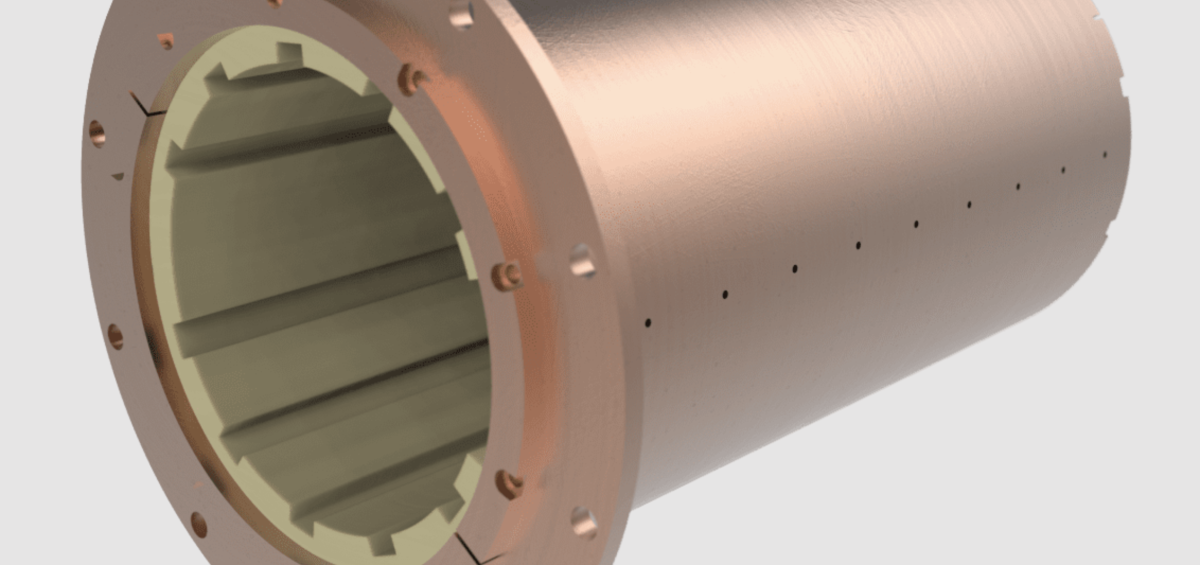A small but important part of a ship is its bearings – that’s right, those little fixtures that, among things, keep its propeller turning.
Because they’re attached to heavy load-bearing apparatus and submerged for most of their useful life in saltwater, the material properties of a vessel’s bearings are all-important.
That’s where composite bearings come into their own.
Unlike traditional bronze bearings, the composite types are non-metallic and use a resinous polymer base coupled with a reinforcing fibrous material to give the bearing both great tensile strength and durability.
The fact that this type of bearing eschews rust-prone metals also means composite bearings have a longer shelf life than their metal-based counterparts.
Below, we examine how composite bearings achieve their longevity and durability.
Rust Resistance
Being immersed in saltwater all its life, any bearing used in a ship’s propeller needs to be resistant to rust and corrosion.
Metal bearings exploit the natural rust resistance properties of the metals used (typically bronze and brass) plus a rust-resistant coating to protect against oxidation, but salty seawater eventually does its worst.
Conversely, composite bearings are entirely untouched by rust.
That’s because they don’t use ferrous materials in their construction, and instead employ a clever mix of polymerised resin and fibres (glass fibre, carbon fibre, aramid fibre are popular), none of which rusts when it comes into contact with saltwater.
Self Lubricating
If a mix of salty seawater and oxidation doesn’t do for the metal bearing, friction will.
Being attached to a heavy propeller that rotates constantly produces lots of friction, which an old-fashioned bearing will seek to limit with a lubricant like oil.
While oil does the job, it’s not the most eco-friendly substance and requires regular checks and changes to maintain the frictionless effect.
Composites don’t use oil to reduce friction.
Instead, they use the surrounding seawater to reduce the mechanical jarring between the propeller and its housing.
All-Weather
Many seafaring vessels are often required to transit between shipping areas that have very different sea temperatures and weather conditions.
This means that bearings have to bear up in the frigid waters found in polar regions as well as they do in the unforgiving heat of the Tropics.
The change in weather conditions inevitably puts stress on all mechanical parts of the ship, not least the bearings that keep the ship’s propeller turning.
However, wear-resistant marine bearings like composites possess a natural plasticity, which means they don’t expand or contract as much as metals with temperature swings.
Shock Absorbent
As well as abrupt temperature changes, a composite bearing’s polymer matrix structure allows it to withstand shocks and knocks that inevitably arise with a mechanical part.
Composite materials derive their shock-absorbing qualities from the fact that they deform slightly upon impact and are able to absorb and disperse the energy internally.
This energy absorption reduces the amount of force transferred to other components (like the shaft or housing), protecting them from damage.
Metals, by contrast, tend to transmit energy to other parts and may experience plastic deformation or cracking in high shock events.
Conclusion
Composite bearings are a great leap forward in marine engineering technology, affording the components to which they are fitted enhanced durability and corrosion resistance.
Not only that, but they also allow for much-reduced maintenance costs and are more environmentally friendly than traditional oil-lubricated bearings.

